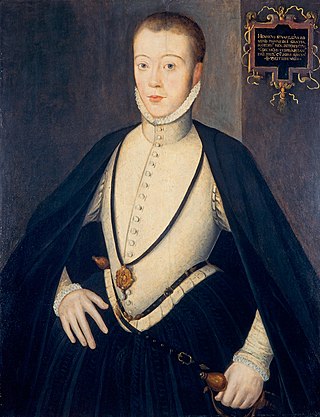
Henry Stuart, Lord Darnley, was an English nobleman who was the second husband of Mary, Queen of Scots, and the father of James VI of Scotland and I of England. Through his parents, he had claims to both the Scottish and English thrones, and from his marriage in 1565 he was king consort of Scotland. Less than a year after the birth of his son, Darnley was murdered at Kirk o' Field in 1567. Many contemporary narratives describing his life and death refer to him as simply Lord Darnley, his title as heir apparent to the Earldom of Lennox.
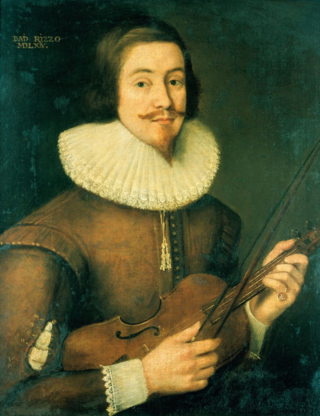
David Rizzio or Riccio was an Italian courtier, born in Pancalieri close to Turin, a descendant of an ancient and noble family still living in Piedmont, the Riccio Counts di San Paolo e Solbrito, who rose to become the private secretary of Mary, Queen of Scots. Mary's husband, Lord Darnley, is said to have been jealous of their friendship because of rumours that Rizzio had impregnated Mary, and he joined in a conspiracy of Protestant nobles to murder him, led by Patrick Ruthven, 3rd Lord Ruthven. Mary was having dinner with Rizzio and a few ladies-in-waiting when Darnley joined them, accused his wife of adultery and then had a group murder Rizzio, who was hiding behind Mary. Mary was held at gunpoint and Rizzio was stabbed numerous times. His body took 57 dagger wounds. The murder was the catalyst of the downfall of Darnley, and had serious consequences for Mary's subsequent reign.

Mary of Guise, also called Mary of Lorraine, was a French noblewoman of the House of Guise, a cadet branch of the House of Lorraine and one of the most powerful families in France. She was Queen consort of Scotland from 1538 until 1542, as the second wife of King James V. As the mother of Mary, Queen of Scots, she was a key figure in the political and religious upheaval that marked mid-16th-century Scotland, ruling the kingdom as Queen regent on behalf of her daughter from 1554 until her death in 1560.
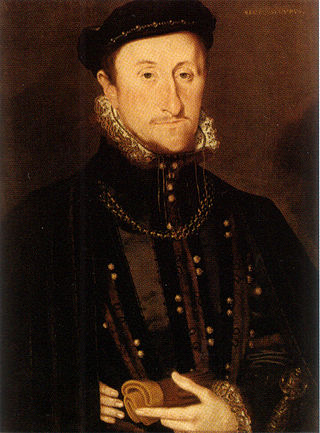
James Stewart, 1st Earl of Moray was a member of the House of Stewart as the illegitimate son of King James V of Scotland. A supporter of his half-sister Mary, Queen of Scots, he was the regent of Scotland for his half-nephew, the infant King James VI, from 1567 until his assassination in 1570. He was the first head of government to be assassinated with a firearm.

The Casket letters were eight letters and some sonnets said to have been written by Mary, Queen of Scots, to the Earl of Bothwell, between January and April 1567. They were produced as evidence against Queen Mary by the Scottish lords who opposed her rule. In particular, the text of the letters was taken to imply that Queen Mary colluded with Bothwell in the murder of her husband, Lord Darnley. Mary's contemporary supporters, including Adam Blackwood, dismissed them as complete forgeries or letters written by the Queen's servant Mary Beaton. The authenticity of the letters, now known only by copies, continues to be debated. Some historians argue that they were forgeries concocted in order to discredit Queen Mary and ensure that Queen Elizabeth I supported the kingship of the infant James VI of Scotland, rather than his mother. The historian John Hungerford Pollen, in 1901, by comparing two genuine letters drafted by Mary, presented a subtle argument that the various surviving copies and translations of the casket letters could not be used as evidence of their original authorship by Mary.

Sir William Kirkcaldy of Grange was a Scottish politician and soldier who fought for the Scottish Reformation. He ended his career holding Edinburgh castle on behalf of Mary, Queen of Scots and was hanged at the conclusion of a long siege.
William Fowler was a Scottish poet or makar, writer, courtier and translator.

The murder of Henry Stuart, Lord Darnley, second husband of Mary, Queen of Scots, took place on 10 February 1567 in Edinburgh, Scotland. Darnley's lodgings were destroyed by gunpowder; his body and that of his servant were found nearby, apparently having been strangled rather than killed in the explosion. Suspicion was placed upon Queen Mary and the Earl of Bothwell, whom Mary went on to marry three months after Darnley's murder. Bothwell was indicted for treason and acquitted, but six of his servants and acquaintances were subsequently arrested, tried, and executed for the crime.

Adrian Vanson was a portrait artist who worked for James VI of Scotland.
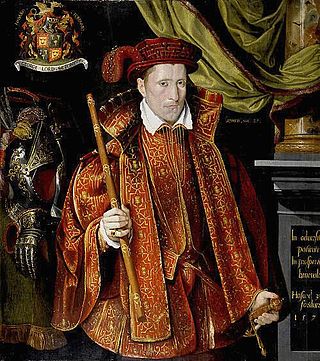
George Seton V, 7th Lord Seton (1531–1586), was a Lord of the Parliament of Scotland, Master of the Household of Mary, Queen of Scots, and Provost of Edinburgh. He was the eldest son of George Seton, 6th Lord Seton, and Elizabeth Hay, a daughter of John Hay, 3rd Lord Hay of Yester. His childhood and schooling were in France.

Bastian Pagez was a French servant and musician at the court of Mary, Queen of Scots. He devised part of the entertainment at the baptism of Prince James at Stirling Castle in 1566. When Mary was exiled in England, Bastian and his family continued in her service. The 19th-century historians Agnes Strickland and William Barclay Turnbull considered his court role as equivalent to the English Master of the Revels; in England he was Mary's chamber valet and designed her embroidery patterns.

The Royal Court of Scotland was the administrative, political and artistic centre of the Kingdom of Scotland. It emerged in the tenth century and continued until it ceased to function when James VI inherited the throne of England in 1603. For most of the medieval era, the king had no "capital" as such. The Pictish centre of Forteviot was the chief royal seat of the early Gaelic Kingdom of Alba that became the Kingdom of Scotland. In the twelfth and thirteenth centuries Scone was a centre for royal business. Edinburgh only began to emerge as the capital in the reign of James III but his successors undertook occasional royal progress to a part of the kingdom. Little is known about the structure of the Scottish royal court in the period before the reign of David I when it began to take on a distinctly feudal character, with the major offices of the Steward, Chamberlain, Constable, Marischal and Lord Chancellor. By the early modern era the court consisted of leading nobles, office holders, ambassadors and supplicants who surrounded the king or queen. The Chancellor was now effectively the first minister of the kingdom and from the mid-sixteenth century he was the leading figure of the Privy Council.

Court music in Scotland is all music associated with the Royal Court of Scotland, between its origins in the tenth century, until its effective dissolution in the seventeenth and eighteenth centuries with the Union of Crowns 1603 and Acts of Union 1707.
Servais de Condé or Condez was a French servant at the court of Mary Queen of Scots, in charge of her wardrobe and the costume for masques performed at the Scottish royal court.
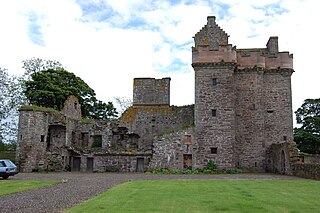
David Beaton of Melgund was a Scottish courtier and landowner.
James Stewart, 1st Lord Doune (1529-1590) was a Scottish landowner.
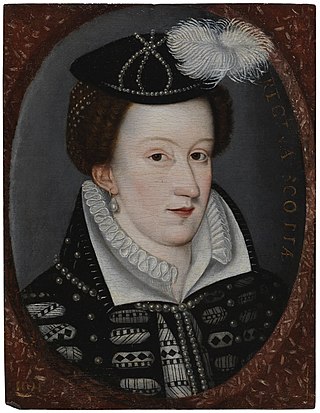
The jewels of Mary, Queen of Scots (1542–1587), are mainly known through the evidence of inventories held by the National Records of Scotland. She was bought jewels during her childhood in France, adding to those she inherited. She gave gifts of jewels to her friends and to reward diplomats. When she abdicated and went to England many of the jewels she left behind in Scotland were sold or pledged for loans, first by her enemies and later by her allies. Mary continued to buy new jewels, some from France, and use them to reward her supporters. In Scotland her remaining jewels were worn by her son James VI and his favourites.

James Mosman or Mossman was a Scottish goldsmith. He and his son John Mosman were supporters of the cause of Mary, Queen of Scots. James Mosman was executed in 1573 for counterfeiting coins in Edinburgh Castle. John Mosman carried letters for Mary, Queen of Scots, and was under surveillance by Francis Walsingham.
The baptism of James VI was celebrated at Stirling Castle in December 1566 with a masque, fireworks, and a staged assault on a mock fortress. The entertainment was devised by George Buchanan and Bastian Pagez.

The wardrobe of Mary, Queen of Scots, was described in several contemporary documents, and many records of her costume have been published.















